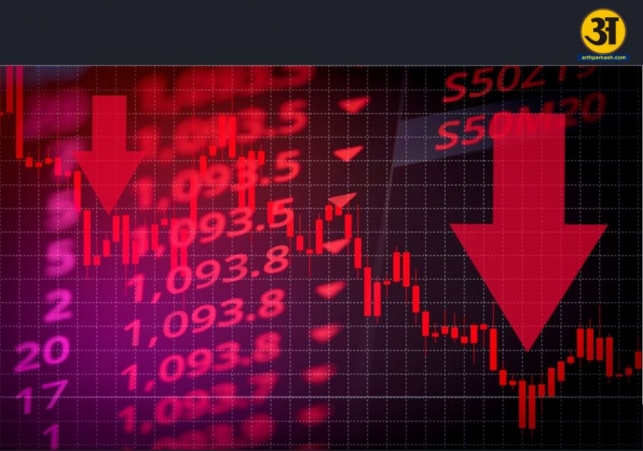
Sensex crashes 1,000 points, rupee at record low
Sensex plummets 1,000 points, Nifty falls 250; rupee hits record low
- By Gurmehar --
- Monday, 13 Jan, 2025
The Indian stock market witnessed a dramatic downturn on Monday, January 13, 2025, as both the BSE Sensex and NSE Nifty ended deep in the red. The benchmark BSE Sensex plummeted 1,048.90 points, or 1.36%, to close at 76,330.01, while the broader NSE Nifty fell 345.55 points, or 1.47%, to close at 23,085.95. This marked one of the sharpest declines in recent months, sending shockwaves through the investor community.
Adding to the economic woes, the rupee sank to an all-time low of 86.62 against the US dollar, registering its steepest single-day fall in nearly two years. The currency’s decline was driven by multiple factors, including strengthening of the US dollar and record-high crude oil prices.
Why did the market crash?
The stock market’s crash stemmed from a combination of domestic and global factors. Foreign investors offloaded equities worth ₹2,254.68 crore last Friday, leading to heightened selling pressure. Additionally, better-than-expected US employment data bolstered the dollar, which further strained the rupee. Rising crude oil prices added to the economic challenges, creating a perfect storm for the financial markets.
Among the sectors hit hardest were real estate, media, IT, and telecom. The Nifty Realty index plunged by 6.47%, closing at 901, while Nifty Media dropped 4.54% to settle at 1,664.50. The Nifty Midsmall IT & Telecom index also saw a significant decline of 4.20%, ending at 10,211.85.
ALSO READ: Blinkit launches 'Ambulance in 10 Minutes' Service, Gurgaon becomes first city to benefit
ALSO READ: Singapore declares Ex-Tycoon Lim Oon Kuin bankrupt following oil empire collapse
Among the 30 Sensex stocks, Zomato Ltd suffered the steepest fall, declining 6.52% to close at ₹227.15. Power Grid Corporation of India Ltd and Adani Ports and Special Economic Zone Ltd followed, with losses of 4.09% and 4.08%, respectively. Despite the widespread sell-off, four Sensex stocks managed to close in the green. Axis Bank Ltd rose by 0.78% to ₹1,048.95, while Tata Consultancy Services Ltd, Hindustan Unilever Ltd, and IndusInd Bank Ltd saw modest gains of 0.62%, 0.45%, and 0.41%, respectively.
Rupee’s record low
The rupee’s historic fall to 86.62 against the dollar is a matter of concern for the Indian economy. This decline can be attributed to the strengthening of the dollar, buoyed by robust employment data from the US. As foreign investors pulled out of Indian equities, the pressure on the rupee intensified. Additionally, rising crude oil prices contributed to the economic strain, as India heavily relies on oil imports.
The stock market’s downturn impacted several key sectors, with real estate, media, and telecom bearing the brunt of the losses. Nifty Realty saw the sharpest drop among sectoral indices, plunging by 6.47% to close at 901. Nifty Media followed closely with a 4.54% decline, settling at 1,664.50. The IT and telecom sectors also faced significant losses, as the Nifty Midsmall IT & Telecom index fell by 4.20% to end at 10,211.85.
While most sectors struggled, a few stocks managed to defy the trend. Axis Bank, Tata Consultancy Services, Hindustan Unilever, and IndusInd Bank emerged as rare gainers, offering a glimmer of hope amidst the market gloom.
The recent crash has raised questions about the stock market’s trajectory in the run-up to the Union Budget 2025. Investor sentiment remains fragile, with many worried about the potential for further declines. The government’s fiscal policies and measures to address economic challenges will play a crucial role in shaping market trends in the coming weeks.
As the markets grapple with these challenges, investors are advised to tread cautiously and keep a close watch on global and domestic developments. The coming days will be critical in determining the direction of the Indian economy and its financial markets.





